When you think of a Land Rover, the ultra-luxurious flagship Range Rover Velar 2024 model quickly comes to mind. However, the Range Rover family has always consisted of four models here in the US. At the top end, of course, is the Big Daddy Range Rover.
At the bottom end is the entry-level Evoque. One rung up the ladder sits the Range Rover Velar, a vehicle we’ve seen in America since 2018. This is Land Rover’s compact entry in the luxury SUV space, going head-to-head against cars like the BMW X3, Mercedes-Benz GLE, and Porsche Macan.
For Range Rover Velar 2024, it’s time for Land Rover to give this vehicle its first full round of updates, including new styling front and rear, an updated infotainment system, and some tweaks to the suspension for slightly better driving dynamics.
This week, Land Rover sent us the Range Rover Velar SE Dynamic, the mid-trim with a 3.0L turbocharged inline-six engine under the hood and standard all-wheel drive. For those who have always wanted a Range Rover but don’t want to break the bank on the bigger models, how does the refreshed 2024 Range Rover Velar stack up? Stay tuned to find out.
Table of Contents
Under the Hood:Power and Performance
Let’s start by examining what’s powering this beast. Initially, you could choose three different engines when this vehicle first launched. However, Land Rover has since dropped the supercharged V8. My tester comes with the company’s latest engine, a 3.0L turbocharged inline-six with a mild hybrid system.
This engine, shared with Jaguar under the JLR brand, is a 3.0L double overhead cam turbocharged inline-six with a 48-volt mild hybrid system and an electric supercharger, effectively making it a twin-charged engine.
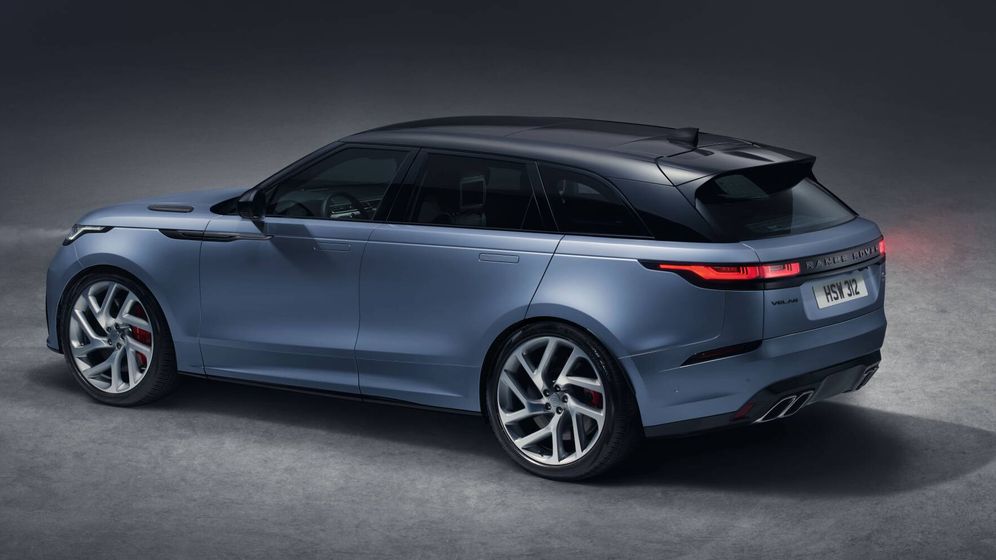
I’ve already tested this motor with the latest Jaguar F-Pace, which shares its platform with Velar. The numbers are similar: 395 horsepower and 405 lb-ft of torque, making it a powerful and efficient choice. Land Rover calls this version the P400. The other option is the P250, a 2.0L turbocharged four-cylinder engine with 247 horsepower.
While I haven’t driven the four-cylinder, the inline-six is likely the more desirable. Power is sent through an eight-speed ZF-sourced automatic transmission and the company’s all-wheel-drive system with terrain response. This vehicle doesn’t offer a low-range transfer case like the Range Rover Sport or the Big Daddy Range Rover, but most drivers will appreciate the all-wheel drive system for its versatility.
Fuel economy is rated 19 mpg in the city and 25 mpg on the highway. With a 21-gallon fuel tank, you’re looking at around 400 to 450 miles of range on a full tank of premium gas. Land Rover claims a 0-60 mph time of around 5.2 seconds and a top speed of 155 mph. This SUV can also tow a little over 5,500 lbs and weighs just under 4,500 lbs.
Exterior Styling: Subtle yet Significant Updates
The 2024 Range Rover Velar features updated styling that maintains its sleek and modern look. The new front and rear designs include updated LED headlights and taillights, which provide a more continuous light blade for a cleaner look. The grille and badging have been blacked out in my tester, thanks to the optional Black Package.
This model sports a new shade of grey called Zadar Gray, which adds an extra $1,500 to the price tag. The exterior design has aged well, continuing to be one of the segment’s most handsome SUVs. With a length of 189 inches, it straddles the line between compact and midsize SUVs, offering a spacious interior without feeling overly bulky.
Interior Enhancements:Technology and Comfort
The updated interior features a new infotainment system with an 11.4-inch screen running Land Rover’s latest PV Pro software, including wireless Apple CarPlay. While the cabin is modern and quiet, I miss the physical controls for climate and seat adjustments, which have been replaced with touch controls. Visibility is generally good, although my tester lacked a digital rearview mirror on higher trims.
The seats in the SE Dynamic trim are comfortable and supportive, with heating and ventilation as standard. Although my tester lacked the massaging seat function on higher trims, the overall comfort and build quality remained high.
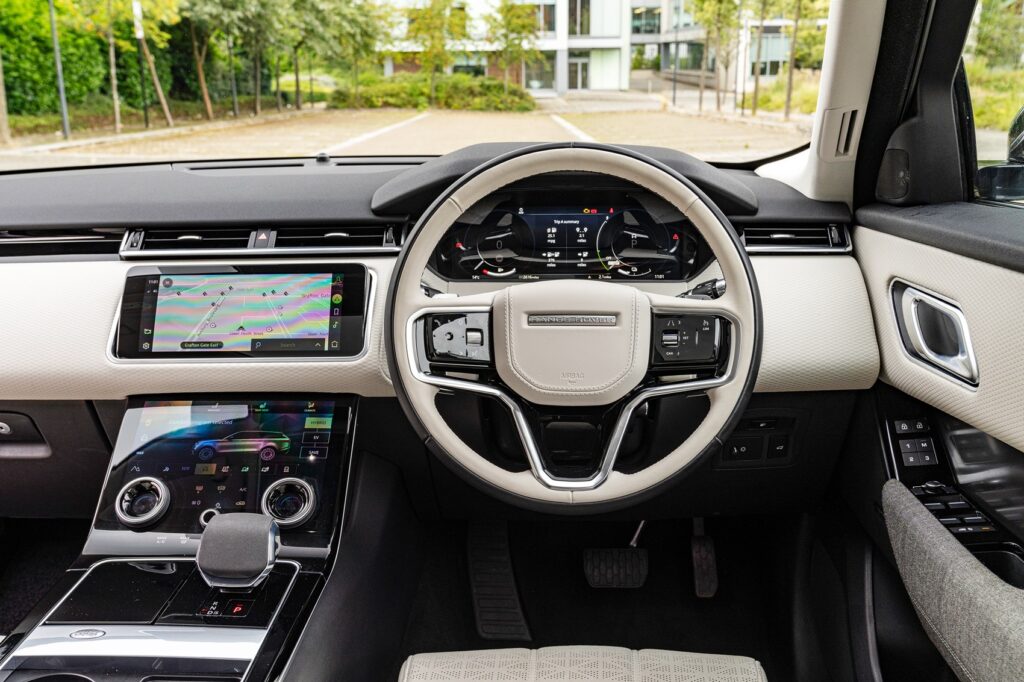
The materials used throughout the cabin are Premium, with a mix of soft-touch plastics, leather, and wood trim. However, some areas still have a cheap feel, particularly the upper portion of the door panels. The back seat offers ample space with 37 inches of legroom, though it’s an inch less than the Range Rover Sport. The seats don’t recline but fold to expand the cargo area to around 62 cubic feet. With the seats up, the Velar provides just under 31 cubic feet of cargo space, which is generous for the segment.
Driving Impressions:Smooth and Capable
Driving the 2024 Range Rover Velar SE Dynamic is a pleasure. The 3.0L turbocharged inline-six engine provides strong acceleration, and the eight-speed automatic transmission shifts smoothly. In real-world testing, I managed a 0-60 mph time of 5.5 seconds, slightly slower than Land Rover’s claim but still respectable.
The Range Rover Velar handles well, with precise steering and a comfortable ride. The dynamic mode sharpens the throttle response and intensifies the suspension, enhancing the driving experience. Although my tester lacked the adaptive dampers and air suspension, it still offered a smooth and composed ride.
The 2024 Land Rover Range Rover Velar SE Dynamic perfectly balances luxury, performance, and style. Its updated technology, refined design, and powerful engine options stand out in the competitive luxury SUV market. Whether driving through the city or exploring off the beaten path, the Velar delivers an exceptional experience without the hefty price tag of its larger siblings.
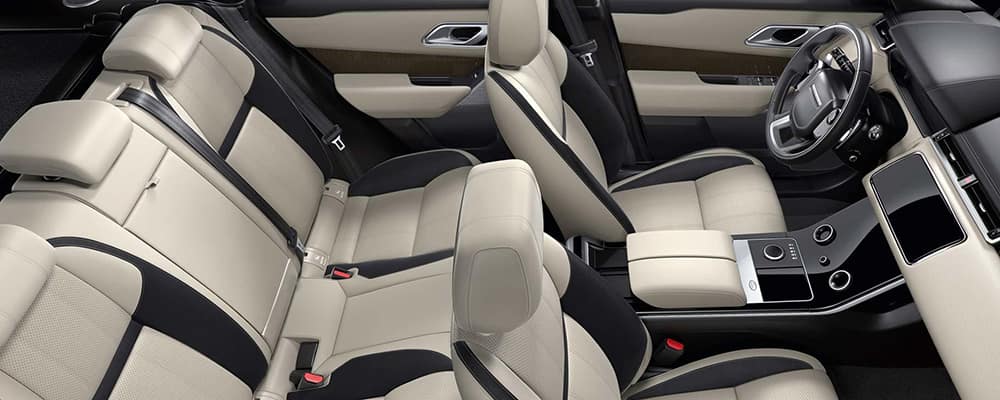
Land Rover has made several tweaks to the 2024 Range Rover Velar, most notably adjusting the electric supercharger to provide more boost at lower RPMs. This change aims to mitigate the lag often experienced with turbochargers. However, upon initial acceleration, the Velar feels sluggish. When you press harder on the accelerator, the vehicle takes off with too much authority, resulting in a somewhat jerky ride before smoothing out.
Ride Quality and Handling
My tester was equipped with diamond-turned 21-inch wheels, which look great but need to provide the smoothest ride. The Range Rover Velar’s ride quality could be more refined than larger Range Rovers like the Range Rover Sport or the full-size Range Rover. The absence of the optional air suspension, available with the dynamic handling package, contributes to this.
Recommend opting for the air suspension to enhance ride comfort and control, allowing you to adjust the height as needed. The current setup feels wallowy and lacks sporty handling, with too much rebound when hitting bumps.
Performance and Driving Modes
All-wheel drive is standard on the Range Rover Velar, providing good traction but sometimes feeling jerky. The Comfort setting helps reduce aggressive throttle response, though it introduces more lag, which may not appeal to everyone. I also find the new drive mode selector, now integrated into the infotainment screen, less user-friendly than the previous physical dial.
Driver Assistance and Safety Features
The 2024 Range Rover Velar has standard driver assistance features like adaptive cruise control, automatic emergency braking, and lane keep assist. These systems work well, though they are less advanced than some German competitors offer.
Performance Comparison
The inline-six engine in the Range Rover Velar delivers a smooth and pleasing sound, with the transmission providing quick and smooth shifts. Despite its strengths, the Velar doesn’t offer the same sporty feel as competitors like the Jaguar F-Pace or Porsche Macan. The Velar feels more road-oriented and comfortable but lacks its rivals’ sportiness and handling prowess.
Fuel Efficiency and Pricing
In my week of testing, the Range Rover Velar averaged just under 21 MPG, close to the EPA’s combined rating, and reached around 24 MPG on the highway. This gives it a decent range of 400-450 miles per tank. Pricing starts at $61,500 for the base model with the four-cylinder engine, which is significantly higher than competitors like the BMW X3, Audi Q5, Mercedes-Benz GLC, and Lexus NX.
The SE mid-level trim with the six-cylinder engine starts at around $70,000. My tester, equipped with several options, came in at just over $81,000. This price point is comparable to a well-equipped Porsche Macan, though the Macan offers better performance and handling.
Overall, the 2024 Range Rover Velar remains a stylish and capable SUV, though it doesn’t quite offer the same standout feel as some of its competitors, which are often less expensive. The Range Rover Velar is a solid choice for those seeking a luxury SUV with a strong brand presence and off-road capability. However, consider looking at other options within the same price range for better performance and value.
Range Rover Velar 2024: more stylized and minimalist
With the latest technology and terrific refinement, the Land Rover model is positioned as a benchmark among ‘premium’ SUVs. The Land Rover Range Rover Velar arrives with a slight update at all levels and with the adoption of improved technology that will make it stand out in its segment, that of premium SUVs.
The changes are not spectacular on the outside, but the overall image is stylized. It does this thanks to adopting a new grille and, above all, new ultra-thin headlights with pixel LED technology. These lights include three times as many diodes as Matrix Led headlights. Each headlight comprises four-pixel modules with 67 individual control diodes. With this, you can create shadows around up to four approaching objects to avoid glare.
Furthermore, its intensity increases so that the adaptive high beam can illuminate up to half a kilometer of distance when exceeding 70 km/h or widen the light beam below that speed. Flush door handles and a new lower rear bumper with three-dimensional rear lights and ultra-redlight complete a body with two new colors, Varesine Blue and Zadar Gray metallic Premium.
Improved Range Rover Velar Interior
Range Rover Velar’s signature minimalist design takes a step further by adopting a new 11.4-inch floating touchscreen with curved glass overlaid on the center console. The operation of this screen has been improved with more intuitive and accessible menus so that 80% of tasks can be performed with just a couple of taps on the home screen.
The Range Rover Velar 2024 will have wireless charging for mobile phones. This is fast charging, in the style of superchargers for electric vehicles. Of course, you will have to monitor the mobile phone and its temperature to avoid battery risks. It will also have Wi-Fi, Amazon Alexa, and what3words navigation technology, which divides the world into 3×3 meter boxes and assigns a unique combination of three random words.
Vegan materials for Velar
Regarding materials, you can choose a vegan interior with different compounds tested with an equivalent of 10 years of use. In addition, UV rays have also been applied to simulate three years of direct sun exposure in just one month.
Another novelty of the Velar is its active noise-cancellation technology. It first detects the frequencies arriving on board and automatically emits a compensation sound through the vehicle’s audio system. With this, the British brand promises that this SUV will be one of the quietest, if not the most peaceful, in its category. As if this were not enough, it also has an air purification system. By pressing the Purify button, nano X technology will significantly reduce unpleasant odors, bacteria, and allergens.
Plug-in Hybrid and Diesel Engine
No gasoline-only mechanics from the Range Rover Velar 2024 will arrive in The USA. However, the P400e variant is a plug-in hybrid version that promises up to 64 kilometers of electric range thanks to a 19.2 kW battery.
It has 404 HP, which comes from a 105 kW (143 HP) electric motor, and another gasoline motor from the Ingenium 2.0 family, with 300 HP. This will allow it to go from 0 to 100 km/h in 5.4 seconds and reach a top speed of 209 km/h. It can reach 140 km/h with the electric motor alone.
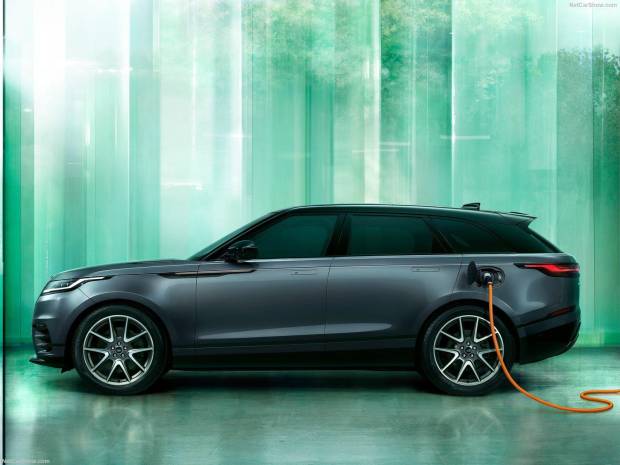
Although its electric autonomy could be better on the market, so would its fast charging possibility. On a 50 kW pole, you can go from 0 to 80% in just 30 minutes. If you charge at home at 7 kW, you will recover all your energy in about two and a half hours. The price of the Range Rover Velar P400e starts at 82,950 euros.
Regarding the diesel engines, the two available have 48-volt micro hybridization. The small one that represents the access to the Velar range is the D200. From 77,600 euros, it offers a power of 204 HP. Above, the D300, already with six cylinders and 300 HP, with a torque of 650 Nm, starts at 94,350 euros.
All have intelligent all-wheel drive and an eight-speed automatic transmission. They also have the Terrain Response 2 system, which allows you to configure the Velar’s settings to adapt to the environment. Its modes are seven: Eco, Comfort, Grass/Gravel/Snow, Mud/Ruts, Sand, Dynamic and Automatic. Each affects the engine configuration, transmission, all-wheel drive system, and suspension and stability control.
Range Rover Velar renews the Velar with subtle aesthetic changes and better technologies.
The British SUV receives an update with aesthetic improvements such as a redesigned grille and rear bumper, or on a technological level, the latest version of the brand’s Pivi Pro infotainment system.
Range Rover Velar, one of JLR’s four brands, has presented the renewal of its Velar model. A series of updates focused mainly on a facelift both outside and inside and more excellent technological equipment. There is no news on its finishes and engines since the Velar S, Dynamic SE, Dynamic HSE, and Autobiography finishes are still available. Just as there are four mechanical options:
1.The P400e plug-in hybrid has 404 HP of combined power, an electric range of 64 kilometers, and zero labels.
2. A version with a gasoline engine, the P400, with 400 HP.
3.Two diesels, the D200 with 204 hp and the D300 with 300 HP.
In addition, all thermal engines have an eco-friendly label, as they incorporate 48-volt light hybrid technology. Regarding the new prices of the model, Range Rover has yet to make them official.
If we start with its design, the SUV presents subtle changes, such as the design of its grille or the rear bumper. In addition, it is equipped with pixel LED technology and three-dimensional rear headlights, which integrate LED technology with ultra-red light and dynamic sequences when turning on and off. More powerful headlights, which are standard on Dynamic HSE and Autobiography models, optimize illumination with Adaptive High Beams and Dynamic Bend Lighting.
The SUV maintains the folding door handles, an element already seen in the car, with subtle LED lighting, which deploys quickly when the doors are unlocked with the key or if a discreet built-in button is pressed. Specifically, they retract when the vehicle stalls or reaches a speed greater than 8 km/h, reducing aerodynamic resistance and creating continuity on the sides.
It is offered in nine exterior colors Velar Range Rover: the solid Fuji White, Metallic Santorini Black, Hakuba Silver, Ostuni Pearl White and Arroios Grey, the metallic Metallic Varesine Blue, as well as Carpathian Grey, Charente Gray, and Zadar Grey, which complete the palette with metallic tones.
The roof can be configured in the same color as the body or in Narvik Black. In addition, Range Rover highlights more elements, especially in the highest trim, Autobiography, which features bonnet and tailgate badges in Satin Burnished Copper and 22-inch alloy wheels in Gloss Dark Gray with a burnished finish—contrast mirror.
This is the interior of the Velar.
In the interior news, the Range Rover Velar 2024 receives the latest version of the British brand’s Pivi Pro infotainment system, which is wirelessly compatible with Apple CarPlay and Android Auto. It has an 11.4-inch floating screen with curved glass, complemented by a 12.3-inch digital instrumentation and a Head-Up Display projected onto the windshield.
All vehicle functions are controlled from the touchscreen, which includes a new menu structure and vertical sidebars to access the most used settings. In addition, it also has Amazon Alexa voice control. The English SUV also equips four-zone configurable climate control, allowing you to personalize the temperature with four different values or optional cabin air purification technology.
As for the seats, they have 20 adjustment positions, air conditioning, and a massage function. The rear ones are also heated and have an electric recline. Since 2018, the Velar has offered a non-leather option, which includes new seat materials and designs.
A fabric that has been subjected to demanding durability tests by Range Rover’s materials laboratory to guarantee its characteristic feel throughout the vehicle’s life. In other words, 60,000 cycles of abrasion tests have been carried out, the equivalent of 10 years of use, and UV ray tests, which simulate three years of extreme sun exposure in just one month.
Following the exterior’s footsteps, the Velar Range Rover interior can be configured in various colors: Cloud, Caraway, Raven Blue, Deep Garnet, and Ebony, and four two-tone options. The same thing happens with the finishes, which allow more significant differentiation in cabin elements such as the steering wheel, the center console, or the air intake.
In addition, the configurable ambient lighting, which allows you to choose between 30 colors, has preset themes and activates a pleasant, warm white light when leaving and entering the SUV.
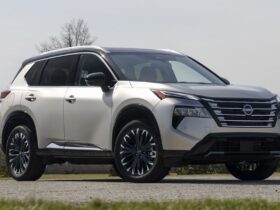
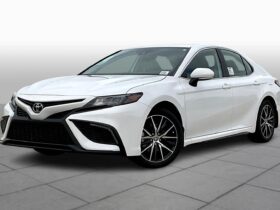
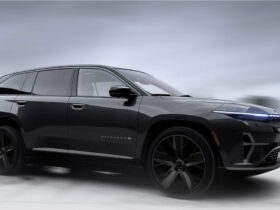
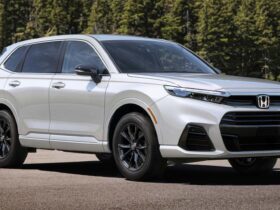
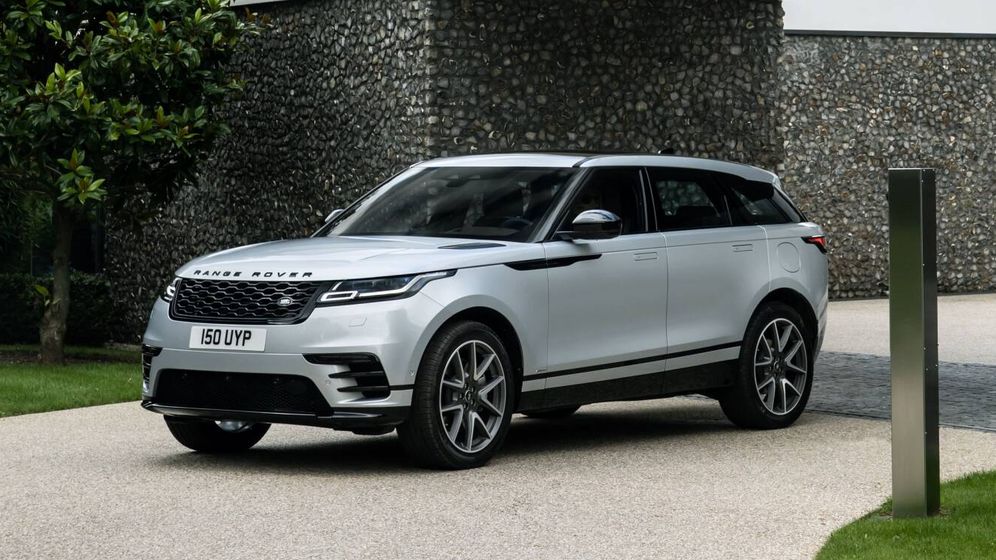
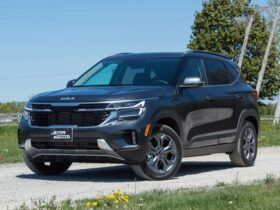
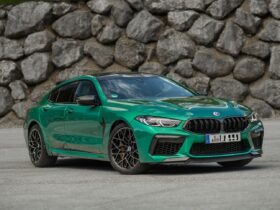
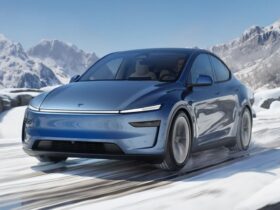
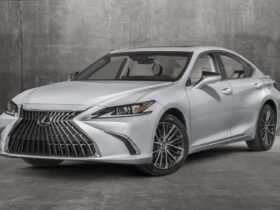
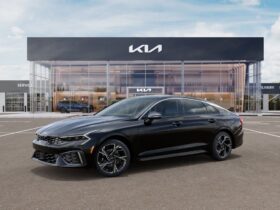
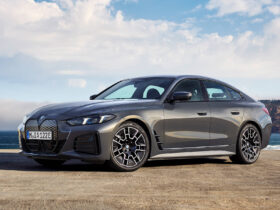


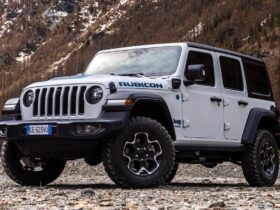
Leave a Reply